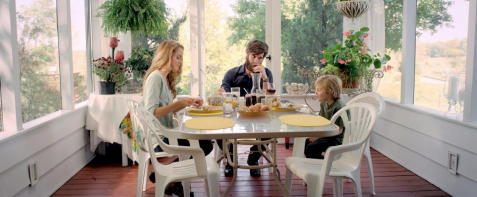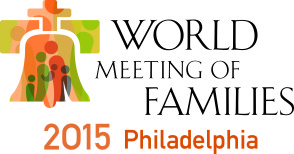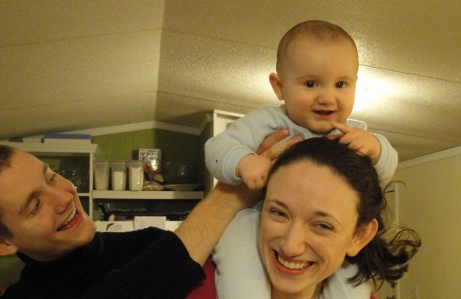Pornography has become increasingly more available and accepted in today’s society. Both men and women of all ages have become entangled in the lies and pain of pornography use and even addiction, which has devastating effects on the user and his or her spouse and family.
It is important that those who are using pornography and those that are affected by a spouse’s receive the support and healing that they need. Below is a select list of resources for those who are struggling with pornography, as well as for their spouses and family members.
For more information about pornography from For Your Marriage, including statistics on pornography use, please visit our Overcoming Obstacles: Pornography articles.
Disclaimer: Please note that the content on this page is provided solely for your information and should not be interpreted as an official endorsement of the organizations, programs, and websites listed. To the best of our knowledge, the information listed here did not conflict with Catholic teaching and was accurate at the time of posting.
Table of Contents
Prayer Resources
Prayer plays a crucial role in the process of breaking free from pornography use.
Here is a link to a Novena for Purity from Covenant Eyes and the Angelic Warfare Confraternity.
Some patron saints of those struggling with purity, whether occasionally or habitually, are: St. Agnes, St. Maria Goretti, St. Augustine of Hippo, St. Gemma Galgani, St. Thomas Aquinas, St. Margaret of Cortona, St. Thérèse of Lisieux, St. Joseph, and the Blessed Virgin Mary .
Help for Men and Women
Catholic support groups and recovery programs
The Angelic Warfare Confraternity
A supernatural fellowship of men and women dedicated to pursuing chastity under the patronage of St. Thomas Aquinas and the Blessed Virgin Mary. The Confraternity is an official apostolate of the Dominican Order.
Breaking Free Blog (for men)
Men helping men to break free and stay free from pornography. Run by the Family Life Center International.
Catholic Support Group for Sexual Addictions and Recovery
Online discussion group where men and women who struggle with sexual addictions support each other through accountability and prayer.
Exodus 90 (for men)
A ninety-day challenge of prayer, asceticism, and fraternity that is designed to help men attain freedom from sexual sin or other struggles. The program developed at a seminary, and today is transforming the lives of thousands of Catholic men across the country. In Exodus 90, men form small teams to go through the challenge together and support one another as they strive to grow in virtue.
Freedom Coaching
One-on-one mentoring program designed to break the attraction to pornified images. Going beyond mere coping mechanisms, Freedom Coaching is designed to help clients, through a transformation of their desires, to seek and find what is true, good, and beautiful, something that pornified images can never provide.
Imago Dei Counseling
Offers individual and couples counseling/coaching in Colorado Springs as well as telephonically for those dealing with pornography and its effects; also available for adolescents, with the coordination of their parents. The program also provides Catholic Men’s Teleconference, a confidential telephonic men’s program for support in working steps towards healing and recovery from sexual addictions, and Intimacy Restored Intensives, a three-day workshop (Intensive Outpatient Treatment – IOT) in Colorado Springs for couples to begin the process of healing from issues related to pornography or sexual behavior.
Integrity Restored
Founded by Dr. Peter Kleponis, author of the book Integrity Restored: Helping Catholic Families Win the Battle Against Pornography, Integrity Restored is an organization dedicated to helping Catholics fight pornography at all levels. Dr. Kleponis and his Integrity Restored Team – Matt Fradd, Fr. Sean Kilcawley and Ryan Foley – provide valuable resources and advice on how to protect individuals, couples and families from the dangers of pornography. Resources are also available for clergy. In addition, information is provided on the Integrity Starts Here Recovery Program, the first comprehensive recovery program for Catholics struggling with pornography addiction and their loved ones.
The King’s Men (for men)
Men’s group focused on building up men as leaders, protectors, and providers. The King’s Men has a special focus on helping men find freedom from pornography addiction with the help of fraternal accountability. Also facilitates wilderness retreats, healing retreats and parish-based weekly groups in some areas.
My House Initiative
A program of the Archdiocese of Kansas City in Kansas, My House offers resources for protecting children and families from pornography. A short video with Matthew Kelly and Archbishop Joseph Naumann is available in English and Spanish for protecting families from pornography. Confession cards, church posters, flyers and prayer cards are also available in both English and Spanish. The videos and resources are available for other dioceses to adapt. The My House Initiative also provides help for individuals and couples who are struggling with pornography including four professional counselors, five weekly recovery groups, and assistance for spouses of pornography users.
Overcome Porn Addiction
Video-based online course for men seeking to overcome pornography addiction. Includes a “Steps to Victory” checklist and a 17-week “Path to Victory Bootcamp” with week-by-week instructions and specific actions to take.
The Porn Effect
The Porn Effect was started by Matt Fradd, a well-known Catholic speaker on pornography. A former addict himself, Matt is now an advocate for breaking pornography addictions. The site offers a number of resources for men and women struggling with pornography, including a 5-step “Battle Plan” and “Ask the Expert” feature.
Reclaim Sexual Health
Science-based, Catholic resources for those impacted by pornography, masturbation, or other unhealthy sexual behaviors. Offers an anonymous online recovery program for pornography users and spouses of pornography users. Also has information for parents about protecting their children from pornography.
Other Christian support groups and recovery programs
Be Broken Ministries
Be Broken Ministries exists to help men break free from sexually addictive behaviors in order to experience the fullness of life as God created it. They offer workshops, e-courses, in-person and long-distance coaching, and resources for both men and their wives.
Beggar’s Daughter (for women)
Jessica Harris is a former porn addict whose blog covers topics such as pornography, lust, and addiction – all from a women’s perspective. She is now a speaker and author of a devotional, Love Done Right, a collection of devotionals specifically written for Christian women struggling with lust.
Bethesda Workshops
The mission of Bethesda Workshops is to encourage sexual wholeness by ministering to men and women damaged by sexual sin and addiction, and those hurt by a spouse’s sexual addiction. They offer intensive healing workshops in Nashville, TN for both men and women.
Bravehearts
A mentoring program to help men break free from sexual addiction and pornography use. Founded by Michael Leahy, who has a powerful conversion story from a life damaged by pornography addiction.
Heart to Heart Counseling Center
Provides professional counseling to those struggling with sexual addiction and their spouses. Located in Colorado Springs but also presents 3-5 day intensive workshops around the country.
Lifestar Therapy
Offers an intensive 6-day outpatient program (IOP) in a safe, nonjudgmental environment where those struggling with pornography and sexual addiction can find help in treating their addiction. With a strong faith base, Lifestar Therapy integrates developing healthy lifestyle changes and a strong connection with God to help people struggling with addiction and their loved ones to heal. Download the free ebook, “The First Step.” For more information, call 888-980-1600 or email info@lifestariop.com.
New Life Partners (for women)
An online resource and support group for women whose lives have been impacted by husbands or loved ones caught in the web of pornography and/or sexual addiction.
Proven Men Ministries
Proven Men is a sexual integrity ministry that partners with churches, offering discipleship resources, in order to see individuals and families equipped and restored.
Pure Life Ministries
Pure Life Ministries offers a number of resources and courses for men, women, wives, and pastoral leaders, including a residential treatment program in rural Kentucky, phone counseling, and a home study program for spouses of pornography users and teens.
XXXChurch
Support for men and women dealing with pornography addiction, as well as for parents and those who are involved in the pornography industry. X3Pure provides 30-day online workshops for men, women, couples and parents. X3Groups offers small online support groups led by a trained team member.
Other support groups and recovery programs
Fortify
A mobile-based recovery program from Fight the New Drug. Youth-oriented and free to anyone under the age of 21. Also includes video education on pornography.
No-Porn.com
Since 1997, No-Porn.com has helped men and women of all backgrounds recover from pornography addiction.
Sexaholics Anonymous
A recovery program and fellowship of men and women who support each other in staying sexually sober. SA is based on the principles of Alcoholics Anonymous and uses a Twelve Step Program. It is not affiliated with any religion or organization.
S-Anon International Family Groups
A program of recovery for those who have been affected by someone else’s sexual behavior. S-Anon is based on the principles of Alcoholics Anonymous and uses a Twelve Step Program. It is not affiliated with any religion or organization. Also provides special programs for teenagers: S-Ateen.
Help for Parents
Covenant Eyes: Unfiltered
A Parent Workshop Kit “for an Ongoing Conversation about Internet Pornography” produced by filtering and accountability site Covenant Eyes. Available online for free: “Protecting Your Family Online: A parent’s how-to guide.”
Enough is Enough
Educational site for parents about how to effectively protect children from online pornography, sexual predators, cyberbullies, and other online dangers.
Faith and Safety: Technology Safety Through the Eyes of Faith
Educational site for parents run by the USCCB and the Greek Orthodox Archdiocese of America. Provides conversation starters for families about technology, family media agreements, reviews of different apps and websites popular among young people, and more.
Good Pictures, Bad Pictures: Porn-Proofing Today’s Young Kids by Kristen A. Jenson and Gail Poyner
A read-aloud story that helps parents teach their children what pornography is, why it’s dangerous, and how to avoid it. It also teaches basic concepts about pornography and brain science, in a way that children can understand. A book for children ages 3-6 is also available, Good Pictures, Bad Pictures Jr: A Simple Plan to Protect Young Minds.
Integrity Restored
Founded by Dr. Peter Kleponis, author of the book The Pornography Epidemic: A Catholic Approach, Integrity Restored has a section of their website dedicated to helping parents protect their children from pornography and help them navigate a culture imbued with pornography.
Pure Hope
Provides Christian solutions in a sexualized culture. Equips individuals, parents, families and churches to pursue sexual purity and oppose sexual exploitation. Key areas of focus include parenting, justice (combatting sex trafficking), and recovery for men and women addicted to pornography. Free downloadable resources include “Parenting in a Sexualized Culture” and “Recovery in a Sexualized Culture.”
Protect Young Eyes
Protect Young Eyes is a constantly updated, free website for parents who want to better understand apps, social media platforms, parental controls on popular devices, and how to create an internet-safer home for their kids. Subscribe to their parent technology newsletter by texting the word “protect” (no quotes) to 66866.
Protect Young Minds
Led by Kristen A. Jenson, author of the best-selling children’s book Good Pictures Bad Pictures, Protect Young Minds™ (PYM) seeks to help parents “porn-proof” their kids before they come across highly addictive and easily accessible internet pornography. Additionally, PYM offers guidance for families whose children have already been hurt by pornography, and hopes to serve as a “force multiplier” by empowering proactive people who want to educate their local communities
Help for Priests
You Are Loved
As a result of the epidemic of pornography, priests have asked Catholic Answers to produce material specifically to address the subject. Catholic Answers published a resource titled You Are Loved, which offers inspiration and hope for the countless individuals struggling to break free of pornography. Perfect for confessional use, pastoral or counseling support on this particular topic.
Internet Filtering Tools
Covenant Eyes
Offers both internet accountability and filtering systems. Internet accountability helps to reduce temptation and start conversations about online activity. The filter systems will prevent users from accessing certain content and websites. Both of these systems are designed for parents, children, and adults. Available on various devices.
X3Watch
X3Watch, an initiative of XXXChurch, is an accountability and filtering program that allows you to monitor your Internet use, block URLs, filter content, and share your progress with people you trust. Available on various devices.
Advocacy and Education Resources
Catholic Answers
Videos of chastity speaker Matt Fradd talking about pornography addiction, recovery, and more.
The Chastity Project
A ministry run by chastity speakers Jason and Crystalina Evert, the Chastity Project features videos on the effects of pornography and recovery from addiction, as well as other chastity-related topics.
Fight the New Drug
A grassroots, youth oriented, non-religious, non-legislative, non-profit organization dedicated to raising awareness on the harmful effects of pornography. They also have a recovery program called “Fortify” (see above).
MaritalHealing.com
An overview of the psychological aspects of pornography addiction and its effects on marriage.
National Center on Sexual Exploitation
Formerly Morality in Media, this is the leading national organization opposing pornography and indecency through public education. Numerous informative articles about the pornography industry, sex trafficking, and research on pornography’s negative effects.
The Social Costs of Pornography
In 2010, the Witherspoon Institute published a book of essays about pornography by leading experts in psychology, sociology, law, and more. The companion website of the same name features videos by the authors and others on various topics related to pornography and the pornography industry.
Whispered in the Dark
This one-day conference aims to bring concerned adults, parents, teachers, single/dating folks, priests, lay people, anyone who wants be more educated on this epidemic up to date with the best tools and resources to help face, battle, and overcome pornography.
DVDs
Conquer Series: A Battle Plan for Purity
A five-episode DVD series with a leader’s guide, hosted by Dr. Ted Roberts, founder of Pure Desire Ministries. The series provides scientific information about the effects of pornography and lays out a spiritual strategy for defeating pornography use and addiction. Good for use in small groups or support groups.
The Heart of the Matter: Finding Light in the Darkness of Pornography Addiction
A documentary featuring interviews with men and woman about how pornography affected their lives and how they found freedom from it. Special features include a guide for parents, help for wives, and a guide for recovery. 75 minutes, with English, Spanish, Portuguese and Romanian subtitles.
Books and Other Print Resources
Bought With a Price: Every Man’s Duty to Protect Himself and His Family from a Pornographic Culture by Bishop Paul S. Loverde (Diocese of Arlington, 2014).
An updated version of Bishop Loverde’s 2006 pastoral letter on the same topic. The small booklet includes a study guide and a suggested rule of life for those wishing to be free from pornography. See also Bishop Loverde’s article in First Things about the letter’s release: “Let the Battle for Purity Begin” (March 19, 2014).
Delivered: True Stories of Men and Women Who Turned from Porn to Purity edited by Matt Fradd, foreword by Jason Evert (San Diego: Catholic Answers Press, 2013).
A compilation of real-life, first-person narratives about the corrosive effects of pornography on both men and women, as well as the possibility of gaining deliverance from pornography use and addiction.
Integrity Restored: Helping Catholic Families Win the Battle Against Pornography by Peter C. Kleponis, Ph.D. (Steubenville, OH: Emmaus Road Publishing, 2014).
Written by clinical therapist and founder of Integrity Restored (see above), this book provides an overview of the effects of pornography on men, women, children, and society, as well as practical advice for breaking free of pornography.
Overcoming Pornography Addiction: A Spiritual Solution by J. Brian Bransfield (New York: Paulist Press, 2013).
A short book by a well-known author and speaker on St. John Paul II’s teachings on the theology of the body. The struggle of pornography is examined through an extended reflection on Chapter 4 of the Gospel of John, Jesus’ encounter with the Samaritan woman at the well. Read a review of the book on the For Your Marriage website.
Restored: True Stories of Love and Trust After Porn edited by Matt and Cameron Fradd
In Restored you’ll read ten honest, hard-hitting accounts of real women and couples whose lives were shattered by porn’s destructive effects. But because God’s grace is stronger, they were able to find healing and hope, trust renewed, and intimacy Restored. Read a review of the book on the For Your Marriage website.
Restoring the Years: A Healing Workbook for Women Dealing with their Husband’s Pornography/Sexual Addiction by Gwyneth Pierce
This interactive book provides women with encouragement and advice about coping with a husband’s addiction to pornography, grounded in Christian teaching and up-to-date psychological science. There is space for journaling and reflecting on relevant Scripture passages.
Restoring the Years: Winning the Battle over Sexual Addiction and Pornography by Gwyneth Pierce.
Restoring the Years provides the earnest reader wisdom and insights drawn from men and women who have fought the fight before you and won! Their stories are backed up with scriptural support, scientific data, and input from noted researchers. You don’t have to let the darkness overtake you. You, too, can overcome by the blood of the Lamb and the word of your testimony. Let today be a new chapter of hope, freedom, and victory.
The Social Costs of Pornography: A Collection of Papers edited by James R. Stoner, Jr. and Donna M. Hughes (Princeton: Witherspoon Institute, 2010).
A compilation of essays on the harms of pornography, moral arguments against it, and issues related to law and policy. The appendix lists main research findings. A companion website provides more information, as well as links to purchase the book, summary version of the book, and a DVD with presentations by the authors.
Transformed by Beauty, Co-Authored by Amanda Zurface, JCL and The Catholic Gentleman’s Sam Guzman.
Transformed by Beauty is a free e-book offered by Covenant Eyes Inc., the pioneer of Internet Accountability software. Beauty can change your life. That’s a bold statement, but one that has been proven true by countless people. In this e-book, you’ll meet a priest, a musician, a ballerina, and a body builder who all have one thing in common: They found freedom, healing, and peace because they encountered the beauty of a transcendent God. In this free download, you’ll learn: How beauty can help you heal from the wounds of pornography; How to have a redeemed vision and a sacramental approach to sexuality; and How we are called to be craftsmen in making beautiful things.
Wired for Intimacy: How pornography hijacks the male brain by William M. Struthers (Downers Grove, IL: IVP Books, 2009).
Written by an associate professor of psychology, this book explains in plain language the science behind the effects of pornography on the brain, particularly the male brain, as well as how and why addiction happens. Includes a reflection on healthy masculinity in the Christian understanding of the human person.
You Are Loved
A short booklet that offers inspiration and hope for the countless individuals struggling to break free of pornography. Published by Catholic Answers.











